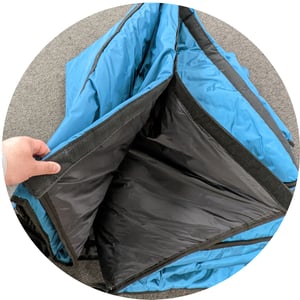This blog will look at thermal protection in the context of transporting goods. This blog also assumes that the goods need to be kept cool rather than warm. If you have a requirement to keep product from getting too cold then the same principles apply.
There will be several causes of temperature variations in transit:
- Variations during daytime and night time temperatures
- Moving goods between different environments such as from a fridge into the ambient environment.
- Exposure to direct sunlight during transport.
We need to slow down the transfer of heat (thermal energy) from outside to inside (or vice versa)
In the same way as water always flows from high to low areas, so heat will always flow from hot to cold areas.
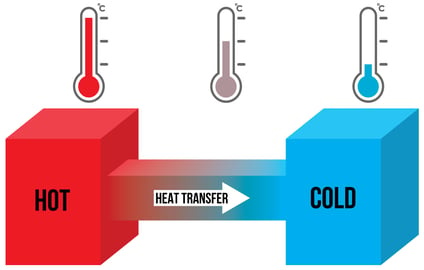
Thermal energy transfers in three different ways;
- CONDUCTION
- CONVECTION
- RADIATION
![AdobeStock_374231061 heat transfer methods [Converted]](https://www.cargo-wise.co.uk/hs-fs/hubfs/AdobeStock_374231061%20heat%20transfer%20methods%20%5BConverted%5D.png?width=600&name=AdobeStock_374231061%20heat%20transfer%20methods%20%5BConverted%5D.png)
A thermal pallet cover needs to slow down, as far as possible, these three heat transfer processes.
Radiation
The main source of heat that causes temperature spikes is RADIATION from the sun.
Unlike conduction and convection - which need particles - infrared radiation is a type of electromagnetic radiation that involves waves.
Because no particles are involved, radiation can flow through the vacuum of space. This is why we can still feel the heat of the Sun even though it is 150 million km away from the Earth.
These waves of energy convert to heat when absorbed by a surface.
The metalised polyethylene (MET PET) 'foil' outer of a thermal cover will reflect around 97% of the thermal energy from radiation, massively reducing the effects of this heat source.
Conduction
Conduction is the transfer of heat between substances that are in direct contact with each other.
The better the conductor, the more rapidly heat will be transferred. Metal is a good conductor of heat (and hence is known as a thermal conductor)
Air and water are poor conductors of heat and hence are known as thermal insulators.
Convection
Convection is the heat transfer due to the movement of a fluid, such as a gas or liquid. Hot gas or liquids will always rise and move up and cold gas or liquid takes its place.
How a thermal cover works
If a load of goods is going to be exposed to direct sunlight at some point in its journey, then a thermal cover will need a reflective foil or white outer face. This will hugely reduce the effect of radiation from the sun.
The foil outer of our pallet covers are actually metalised polyester (MET PET) film which is more robust than aluminium foil and hence will stand up to the wear and tear of a journey better, and has better reflectivity.
So that deals with the RADIATION problem.
So how does a thermal cover deal with CONDUCTION of heat trying to pass through?
Quite simply by adding a layer that does not conduct heat.
This can be either a non-woven material that is laminated to the MET PET, or a polyester fibre fill.
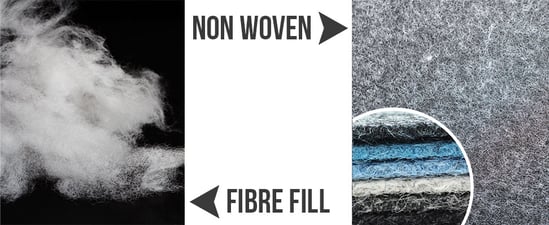
Both these materials are poor conductors of heat. However, they also insulate by limiting CONVECTION.
The fibre fill works by trapping pockets of air within the fibre fill structure. Air is a very good insulator, and the fibre fill prevents any transfer of heat through CONVECTION.
Some foil covers have a layer of MET PET on the inside facing the chilled goods. You may wonder what the point of this is seeing as heat will only flow one way, from the outside in.
This is where we consider the principle of a radiator in a house (for those who live in countries cold enough to require radiators!).
Most radiators are supplied by the manufacterers in white.
However, white is not the most effective colour for radiating heat. The best colour is actually matt black.
The worst colour for radiating heat would be a shiny finish such as.....MET PET!
So by having a shiny surface on the inside of the cover means that the smallest amount of heat is radiated through to the chilled goods. In reality, with all the other barriers that thermal energy has already been reduced significantly by, the difference this makes is very small.
But over a period of time, days, or even weeks, and in demanding situations, every factor counts to keep products within desired temperature ranges.
It is surprising how effective thermal covers are
We supplied some fibre filled foil pallet covers to a pop-up bar at Glastonbury Festival 2022, which they used to cover pallets of ice cubes during the 5 day festival and keep them frozen, and they worked perfectly.
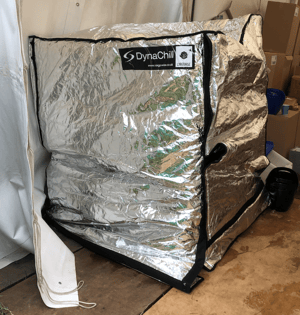
We work with an air freight forwarder who ships chilled goods all over the world and they use frozen gel ice packs within a foil liner inside an air freight container as shown below.
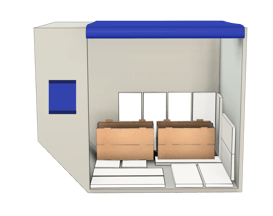
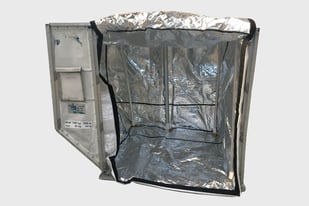
They use temperature data loggers to monitor the temperature of the chilled goods throughout the journey. The target temperature range is between 2 to 8 degrees Celcius.

The freight forwarder commented that after three days the gel ice packs were still frozen solid, and the containers had spent some time in Doha, Qatar, where temperatures average early 23 degrees Celsius in February.
Our thermal foil covers compared
This foil cover is our most popular solution for thermal protection. It consists of 5 layers laminated together with MET PET inside and out, non-woven material and two layers of LDPE to give the cover extra strength and puncture resistance.
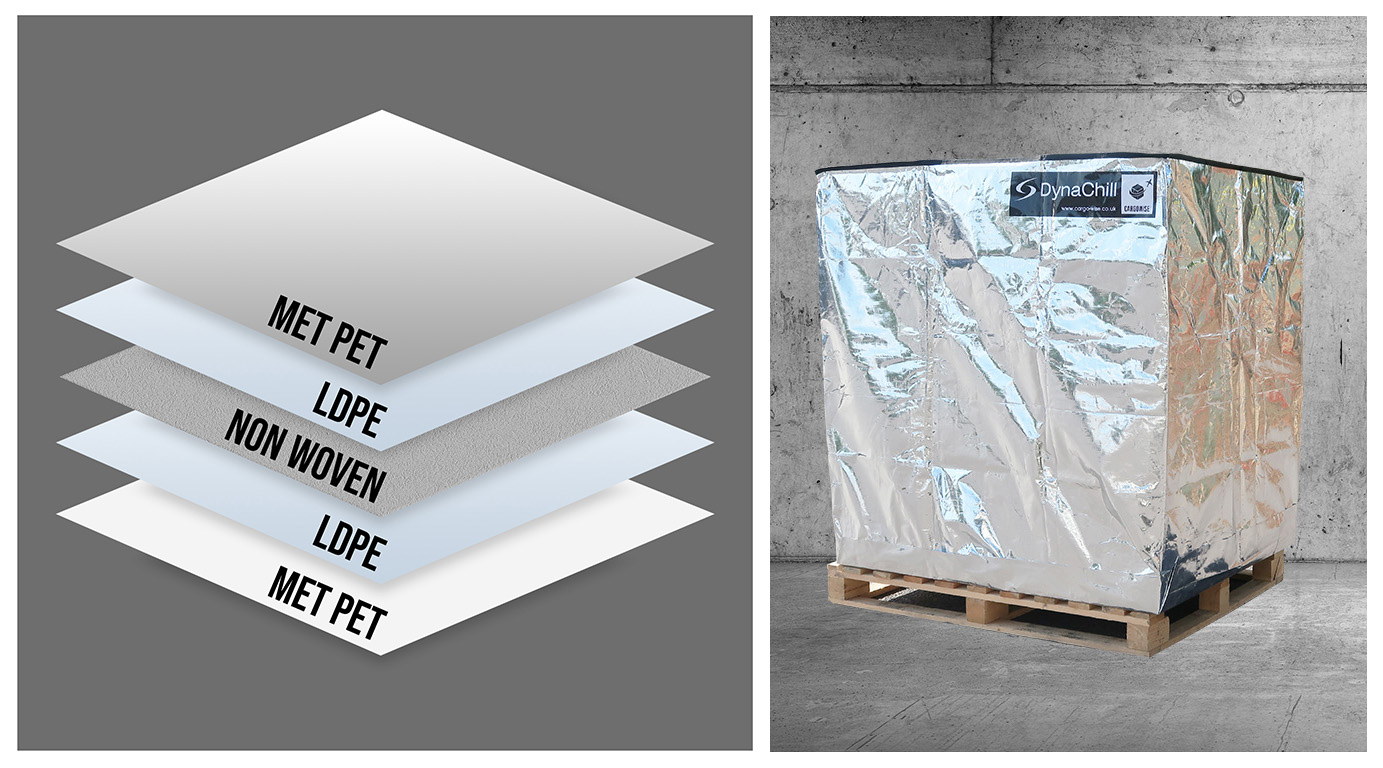
As discussed earlier, this combination of layers is very effective as providing thermal protection.
For single use applications where cost minimisation is key, then we can supply a single sided foil cover which has only one layer of MET PET on the external surface, and none internally.
This thermal foil cover is a very effective reusable thermal cover and comprises 7 layers as shown in the illustration below.
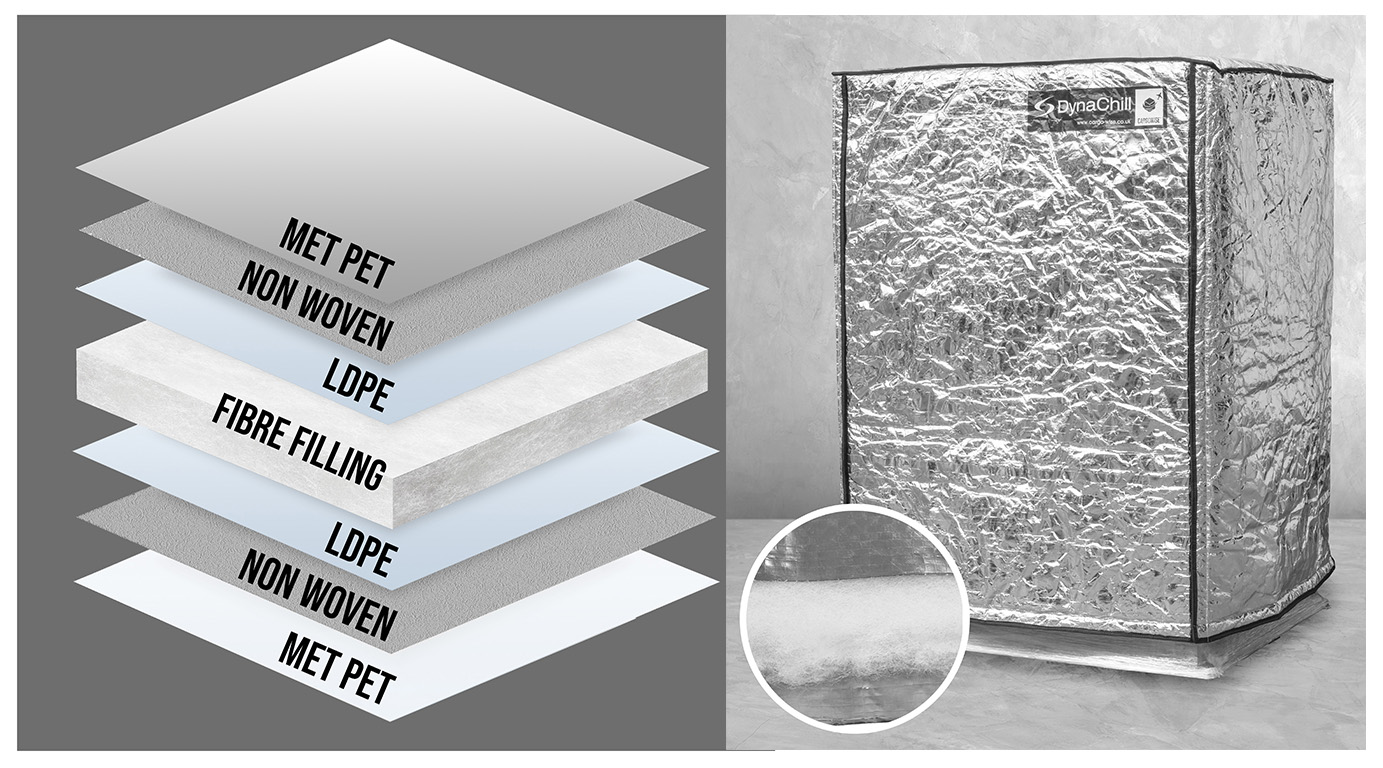
As you will see from our discussion, the thermal performance of this cover will be outstanding. We have MET PET foil layers inside and out, two layers of non-woven material, and a fibre fill layer that traps air to provide another very effective thermal barrier.
This thermal cover has hook and loop tape on each corner enabling the cover to easily be applied and removed for use again and again.
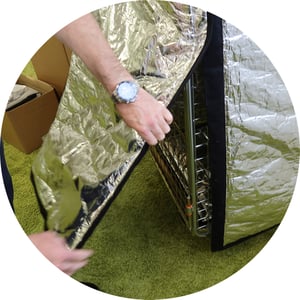
So broadly speaking, while there are many thermal cover options, these two types of cover discussed will meet the requirements of people either requiring a single use cover for export, or a reusable cover for demanding tasks.
Of course the fibre fill cover can be used for export if the goods contained need additional protection, but the double sided foil cover meets most applications where 72 hours of protection is required.
There are other factors that you will be considering such as reusabililty, and there are very robust options available as shown below.
Please contact us if you would like further guidance on the best thermal pallet cover solution for you.
